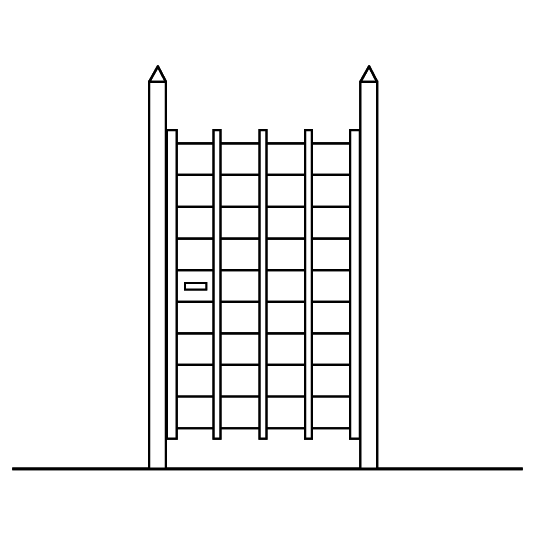|
||
 |
||

(C)2001 Japanese Architecture and Art Net Users System. No reproduction or republication without written permission.
掲載のテキスト・写真・イラストなど、全てのコンテンツの無断複製・転載を禁じます。
|
||||||
| sarudo 猿戸 | ||||||
| KEY WORD : architecture / tea houses | ||||||
| Lit. monkey door. A type of bolted gate, called a wicket or a *kido 木戸, used at the border between the inner tea garden *uchiroji 内露地, and outer tea garden *sotoroji 外露地, where it functions as a middle gate *chuumon 中門. The simplest type of gate used in tea gardens. It has two bark-covered log posts partly buried in the ground and a single hinged door latched with a bolt. The posts are usually made of cedar, cypress or chestnut, and the door has boards attached transversely with bamboo battens on the front and back. The battens are extended above the top and below the bottom of the gate, and there is no roof. If the gate is vertically elongated, it is called tatesarudo 立猿戸, and if the gate is quite wide, it is called yokosarudo 横猿戸. Sen Rikyuu 千利休 (1522-91) supposedly favored the sarudo as an expression of *wabi わび. The gate is also associated with the Sekishuu style *Sekishuuryuu 石州流. The sarudo often confused with the very similar *tsunodo 角戸, and according to some the tsunodo is one variant of the sarudo. | ||||||
 |
||||||
| REFERENCES: | ||||||
| EXTERNAL LINKS: | ||||||
| NOTES: | ||||||
(C)2001 Japanese Architecture and Art Net Users System. No reproduction or republication without written permission. 掲載のテキスト・写真・イラストなど、全てのコンテンツの無断複製・転載を禁じます。 |
||||||